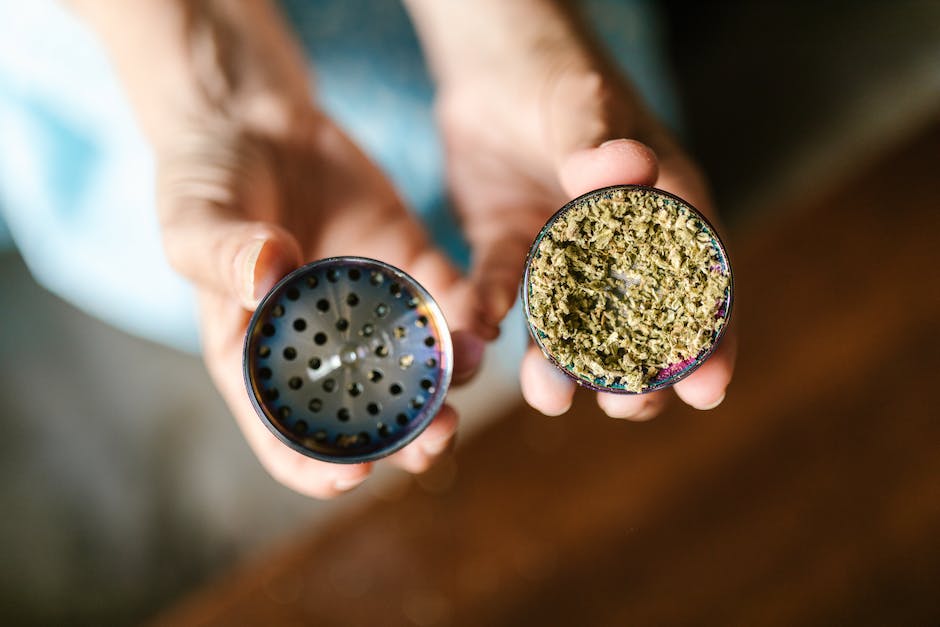Cannabis Around the World: Unique Uses and Traditions
Introduction:
Cannabis, also known as marijuana, has a long and complex history that spans across different cultures and continents. While it has faced legal restrictions in many parts of the world, it has also been celebrated for its diverse uses ranging from medicinal to spiritual purposes. In this blog post, we will explore the various unique uses and traditions associated with cannabis in different countries, shedding light on the cultural significance and historical background that surrounds this versatile plant. From Asia to Europe to the Americas, cannabis has left an indelible mark on societies throughout history, and understanding these different perspectives can offer valuable insights into its global impact. So let’s embark on a journey to discover the fascinating world of cannabis and its diverse roles in different cultures.
Historical origin: Tracing the early use of cannabis in different parts of the world
Historical Origin: Tracing the Early Use of Cannabis in Different Parts of the World
The historical origin of cannabis dates back thousands of years and can be traced to various parts of the world. From ancient civilizations to traditional practices, cannabis has played a significant role in different cultures throughout history.
In Asia, particularly in ancient China, cannabis has been documented as one of the earliest cultivated crops. The Chinese began utilizing cannabis for its medicinal and therapeutic properties as early as 2700 BCE. Its uses ranged from treating various ailments to being incorporated into religious rituals. The Chinese also recognized the hemp variety of cannabis for its strong fibers, which were used to make textiles and paper.
In India, cannabis has been deeply rooted in religious and spiritual traditions for centuries. The plant is closely associated with Lord Shiva, one of the principal deities in Hinduism. Devotees of Lord Shiva, often called “sadhus” or holy men, have used cannabis as an integral part of their meditative practices. They believe that cannabis helps them attain a state of transcendence and spiritual enlightenment.
Moving to the Middle East and North Africa, cannabis holds historical significance in the region as well. Ancient texts from the Islamic golden age mention the therapeutic properties of cannabis, highlighting its use as a pain reliever and sedative. Traditional herbal medicine practices in countries like Egypt, Morocco, and Lebanon have incorporated cannabis for treating diverse health conditions.
In Africa, cannabis has been used for both medicinal and spiritual purposes for centuries. Evidence suggests that ancient African civilizations cultivated and consumed cannabis for its medicinal properties long before its introduction to the Americas. Many African cultures also incorporated cannabis into their spiritual ceremonies and rituals, considering it as a gateway to communicate with deities and ancestors.
While cannabis traces its historical roots back to Asia, the Americas were not untouched by its influence. Indigenous tribes across North and South America utilized cannabis in different ways. Within Native American cultures, cannabis was often burned as incense during rituals, offering prayers to spirits and seeking their guidance. In South America, the ancient Inca civilization used cannabis seeds for their nutritional value and as an important part of their diet.
The historical origin of cannabis showcases its significance across diverse cultures throughout the world. Whether as a medicinal herb, a spiritual tool, or an essential crop, cannabis has played a unique role within various societies. Exploring these historical uses helps us gain a deeper understanding of the plant’s rich global heritage.
Medical applications: Examining unique medical traditions and practices involving cannabis in various countries
Cannabis has been utilized for medical purposes across different cultures and countries for centuries. In this section, we will explore some unique medical traditions and practices involving cannabis from around the world.
India:
In ancient Indian medicine, or Ayurveda, cannabis has been utilized for its therapeutic properties for thousands of years. The traditional medicinal use of cannabis in India is known as “Bhang.” Bhang is typically consumed in the form of a drink or infused into sweets and is believed to have a range of medical benefits, including pain relief, anti-inflammatory properties, and aiding digestion.
China:
Cannabis has also been used medicinally in traditional Chinese medicine (TCM) for centuries. In TCM, cannabis is believed to have properties that help balance the body’s energies and alleviate symptoms such as pain and inflammation. Chinese medical practitioners use various parts of the plant, including the leaves, seeds, and roots, in the preparation of herbal formulations to be taken internally or applied externally.
Israel:
Israel has emerged as a leading hub for cannabis research and medical advancements. The country has been at the forefront of cannabis research and has made significant contributions to the scientific understanding of the plant’s medical applications. Israeli researchers have explored the potential uses of cannabis in treating conditions such as epilepsy, chronic pain, and post-traumatic stress disorder (PTSD). Their pioneering work has paved the way for advancements in medical cannabis around the globe.
Jamaica:
Known for its association with recreational use, cannabis also plays a significant role in traditional Jamaican medicine, often referred to as “bush medicine.” The herb is used in various forms, such as teas, tinctures, and topical applications, to treat a range of ailments. Jamaican traditional practitioners, or “bush doctors,” believe that cannabis can help alleviate symptoms of conditions such as asthma, arthritis, and even menstrual cramps.
Netherlands:
Although the Netherlands is renowned for its progressive stance on cannabis, the use of cannabis for medical purposes is relatively recent in the country. However, the Netherlands has become a pioneer in establishing a regulated medical cannabis industry. Medical cannabis products are now available through pharmacies and are prescribed for a variety of conditions, including chronic pain, multiple sclerosis, and certain forms of epilepsy.
As cannabis legalization spreads globally, it is essential to understand and respect the diverse cultural traditions and practices surrounding its medical use. By recognizing the unique medical applications found in different countries, we can further explore the potential benefits of cannabis and advance scientific research in the field.
Spiritual and ceremonial use: Highlighting the role of cannabis in religious rituals and ceremonies
Throughout history, cannabis has played a significant role in various spiritual and ceremonial practices around the world. From ancient civilizations to modern-day rituals, cannabis has been revered for its psychoactive properties and its ability to induce altered states of consciousness.
In many cultures, the use of cannabis in religious ceremonies is deeply rooted. For instance, in Hinduism, the ancient scripture known as the Vedas mentions the association of cannabis with Lord Shiva, one of the principal deities. Devotees of Lord Shiva often consume a preparation called “bhang” during festivals and religious gatherings. Bhang, made from cannabis leaves and milk or yogurt, is believed to aid in meditation, promote spiritual awakening, and foster a connection with the divine.
Similarly, Rastafarianism, a spiritual movement that originated in Jamaica, considers cannabis (referred to as “ganja”) as a sacrament. Rastafarians believe that cannabis serves as a conduit to commune with God and attain spiritual enlightenment. The use of ganja in religious rituals is seen as a way to cleanse the body, mind, and soul, allowing individuals to experience a deeper sense of spirituality.
In some Native American tribes, cannabis has been used for centuries in ceremonial practices. The Cheyenne people, for example, include cannabis as one of the four sacred herbs, along with tobacco, sage, and sweet grass. The cannabis plant is believed to possess healing properties and is used in ceremonies that aim to restore balance, connect with ancestors, and seek spiritual guidance.
Furthermore, various indigenous cultures in South America have long incorporated cannabis into their spiritual and shamanic rituals. In certain Amazonian tribes, shamans use cannabis as a tool for divination, healing, and communicating with spirits. The plant is often consumed in the form of a potent beverage called “ayahuasca,” which combines cannabis with other visionary plants.
These spiritual and ceremonial uses of cannabis highlight the profound impact the plant has had on human consciousness and spirituality. While these practices may vary across cultures and belief systems, they all recognize the potential of cannabis to facilitate introspection, transcendence, and connection with the divine.
It is essential to respect and understand the cultural significance and traditions associated with the spiritual and ceremonial use of cannabis. As more regions begin to decriminalize or legalize cannabis, it is crucial to preserve these age-old practices and ensure they are approached with reverence and understanding.
In conclusion, the spiritual and ceremonial use of cannabis offers a glimpse into the profound relationship between humans and the plant. As we explore its unique uses and traditions around the world, we come to appreciate how cannabis has been an integral part of spiritual journeys, religious practices, and the pursuit of higher consciousness for countless generations.
Recreational use: Discussing cultural attitudes towards recreational cannabis use across different regions
In recent years, there has been a significant shift in cultural attitudes towards recreational cannabis use across different regions around the world. While some countries still enforce strict prohibition laws, many others have adopted more lenient policies or outright legalization. This difference in the acceptance and regulation of recreational cannabis reflects the diverse cultural perspectives on the substance.
In the United States, for example, several states have legalized recreational cannabis, allowing individuals aged 21 and above to purchase and consume it for non-medical purposes. This shift has resulted in the emergence of a thriving cannabis culture, with marijuana dispensaries opening up in various cities and towns. The relaxed attitudes towards recreational use have also given rise to events such as Cannabis Cups, where enthusiasts can gather to celebrate and explore different strains and products.
In contrast, some European countries like the Netherlands have long been associated with lenient attitudes towards cannabis use. In certain cities like Amsterdam, cannabis “coffee shops” have become popular tourist destinations. These establishments not only provide a safe and regulated environment for people to purchase and consume cannabis, but they also contribute to the local economy and tourism industry. The Netherlands’ approach to recreational cannabis use has been seen as an example of harm reduction, focusing on preventing associated issues rather than outright prohibition.
Other regions, such as certain parts of South America, have embraced their cultural traditions surrounding recreational cannabis. In countries like Jamaica, marijuana has been an integral part of Rastafarian culture for centuries. It is sacramentally used during religious ceremonies and is deeply ingrained in their way of life. Although it is still officially illegal in Jamaica, the government has made efforts to decriminalize and regulate the plant, recognizing its cultural significance.
It is important to note that while some regions have embraced the recreational use of cannabis, there are still places where it remains strictly prohibited. In some countries in Asia, for example, possession and use of cannabis can result in severe legal consequences. These strict cultural attitudes towards recreational use often stem from conservative ideologies and a focus on maintaining traditional values.
Overall, the cultural attitudes towards recreational cannabis use vary greatly across different regions of the world. Some countries have embraced legalization as an opportunity for economic growth and harm reduction, while others continue to prohibit its use based on deeply ingrained cultural beliefs. Understanding these differences is essential when exploring the unique uses and traditions associated with cannabis around the globe.
Traditional preparations: Exploring traditional methods of consuming cannabis, such as bhang in India or mahjoun in Morocco
Traditional preparations: Exploring traditional methods of consuming cannabis, such as bhang in India or mahjoun in Morocco.
In many parts of the world, cannabis has been used for centuries as a traditional medicinal herb and for spiritual purposes. These ancient cultures have developed unique methods of preparing and consuming cannabis, which are still practiced today. Let’s take a closer look at two traditional preparations from different parts of the world – bhang in India and mahjoun in Morocco.
In India, cannabis has a long history and is deeply ingrained in the country’s culture and religious practices. One of the traditional methods of consuming cannabis in India is through a preparation called bhang. Bhang is made by grinding cannabis leaves and flowers into a paste, which is then mixed with milk, ghee, and a variety of spices and sweeteners. This mixture is traditionally consumed as a drink on special occasions, particularly during the festival of Holi. Bhang provides a mild and uplifting effect, and it is believed to have healing properties for the mind and body.
Moving to Morocco, we find another intriguing traditional preparation known as mahjoun. Mahjoun is a cannabis-infused sweet treat that has its roots in the country’s rich history and cultural heritage. Typically, mahjoun is made by mixing ground cannabis with honey, nuts, spices, and dried fruits, creating a dense and flavorful mixture. This concoction is then rolled into small balls or bars, which are consumed as a traditional delicacy. While the exact recipe may vary from region to region, mahjoun is often enjoyed as a communal experience, with friends or family members sharing the treat and savoring its unique taste and effects.
These traditional preparations highlight the cultural significance and diverse uses of cannabis around the world. While some countries are now embracing the legalization of cannabis for medicinal or recreational purposes, it is important to acknowledge and respect these long-standing traditions that have been passed down through generations.
In conclusion, bhang in India and mahjoun in Morocco offer us a glimpse into the rich history and cultural significance of cannabis. These traditional preparations not only provide a unique way to consume cannabis but also offer insights into the spiritual, medicinal, and communal aspects of these ancient practices. Exploring different traditions from around the world helps to broaden our understanding of cannabis and highlights the importance of preserving and respecting cultural heritage.
Hemp fiber and industrial uses: Shedding light on how countries utilize cannabis for industrial purposes, such as textiles, paper, and construction materials
Hemp fiber and industrial uses:
When it comes to cannabis, most people immediately think of its recreational or medicinal use. However, it is important to shed light on the lesser-known but equally significant industrial uses of cannabis, particularly hemp fiber. Hemp has been cultivated for thousands of years and has been used for a wide range of industrial purposes across different countries.
One of the primary applications of hemp fiber is in textiles. With its strong and durable fibers, hemp is used to produce a variety of clothing and fabric. Many countries have recognized the potential of hemp in the textile industry and have embraced its cultivation and processing. Hemp textiles are not only eco-friendly but also highly valued for their sustainability and longevity.
Hemp is also utilized in the production of paper. In fact, before the rise of wood pulp, hemp was the primary source of paper fiber. Its fast growth rate, high yield per acre, and low need for pesticides and herbicides make it a favorable choice for sustainable paper production. Several countries have incorporated hemp in their paper manufacturing process, reducing the ecological impact of the paper industry.
Moreover, hemp has found its way into the construction industry as well. The strong and flexible fibers of hemp make it an ideal material for construction purposes. Hempcrete, a mixture of hemp hurds and lime, is gaining popularity as a sustainable alternative to traditional concrete. It offers excellent thermal insulation properties, is lightweight, and has a low carbon footprint. Various countries have started using hemp in the construction of houses, buildings, and even bridges.
From textiles to paper and construction materials, cannabis has become an invaluable resource for multiple industries worldwide. The versatility and sustainability of hemp fiber have led many countries to explore its potential, not only for economic growth but also for reducing their ecological footprint. As the demand for environmentally friendly alternatives continues to rise, it is likely that the industrial uses of cannabis will gain even more prominence in the years to come.
Cannabis legislation: Examining the variations in cannabis laws and regulations worldwide
Cannabis legislation: Examining the variations in cannabis laws and regulations worldwide
As cannabis continues to gain momentum as a global industry, it is crucial to understand the various laws and regulations surrounding its use in different countries. Given the increasing acceptance and legalization of cannabis for medical and recreational purposes, it is no surprise that the legal landscape surrounding cannabis is constantly evolving. In this section, we take a closer look into the diverse approaches different countries have adopted when it comes to cannabis legislation.
North America:
In recent years, both the United States and Canada have made significant strides in cannabis reform. While Canada has legalized recreational cannabis nationwide, the United States has taken a more fragmented approach. As of now, marijuana laws vary from state to state, ranging from complete legalization in some states to medical use only in others. This patchwork of regulations can make it challenging for businesses to navigate the cannabis industry across different regions within North America.
Europe:
In Europe, cannabis legislation varies widely from country to country. Some nations, like the Netherlands and Portugal, have adopted comparatively liberal policies. The Netherlands, for example, allows limited cannabis sales in designated coffee shops. In contrast, Portugal decriminalized the possession and use of drugs, including cannabis, in 2001, focusing on rehabilitation rather than punishment. However, other European countries maintain stricter laws that criminalize any form of cannabis use. It is essential for businesses to understand these differences and adhere to the specific regulations in each European market they wish to enter.
Latin America:
Latin American countries, such as Uruguay and Mexico, have been at the forefront of cannabis liberalization. Uruguay became the first country in the world to fully legalize cannabis in 2013, permitting both recreational and medical use. Mexico, on the other hand, has made significant strides toward legalization, with the Supreme Court ruling that the recreational use of cannabis is a fundamental human right. However, regulatory frameworks are still being developed and implemented across the region. Businesses looking to capitalize on the emerging Latin American cannabis market should closely monitor the evolving legislation in each country.
Asia:
Asia remains one of the most restrictive regions when it comes to cannabis legislation. Many countries, including China, Malaysia, and Singapore, have strict drug policies and consider cannabis illegal in all forms. However, other Asian countries, like Thailand and South Korea, have decriminalized or legalized medical cannabis to varying degrees, signaling a potential shift in attitudes towards the plant. It is crucial for businesses to approach the Asian market with caution and thoroughly understand the legal implications before exploring cannabis-related opportunities.
Conclusion:
The global cannabis industry presents exciting opportunities for businesses. However, navigating the complex and diverse landscape of cannabis legislation is vital for success. Understanding the variations in laws and regulations worldwide is not only necessary from a legal standpoint but also allows businesses to approach each market with the utmost professionalism and integrity. By staying up to date with evolving cannabis legislation, businesses can position themselves for success in this dynamic industry.
Cultural stigmas and challenges: Addressing the social and cultural barriers faced by cannabis enthusiasts in different societies
Cannabis Around the World: Unique Uses and Traditions
Cultural stigmas and challenges:
Addressing the social and cultural barriers faced by cannabis enthusiasts in different societies
Cannabis, with its eclectic history spanning centuries, has not been exempt from the cultural stigmas and challenges associated with its use. Despite the growing acceptance and legalization of cannabis in several countries, there still exist social and cultural barriers that impede its widespread adoption and acceptance.
One of the main challenges faced by cannabis enthusiasts is the deeply ingrained historical stigma surrounding the plant. In many cultures, cannabis has been associated with immoral behavior, criminal activity, and a lack of productivity. These negative associations have contributed to the creation of societal taboos and prejudices against those who engage in cannabis use.
Furthermore, religious and cultural beliefs play a significant role in shaping perceptions of cannabis. Certain societies view cannabis as a taboo substance, contradicting their religious or cultural values, while others may consider it an essential element of their faith or traditional practices. These conflicting perspectives often result in complex discussions and debates regarding whether cannabis use should be morally and ethically acceptable.
Legal frameworks also influence the social acceptance of cannabis. Some countries have implemented strict legislation against cannabis use, creating an environment of fear and uncertainty for enthusiasts. Despite recent movements towards legalization in various parts of the world, the divergent perspectives among societies remain a significant challenge for cannabis advocates seeking broader acceptance.
Addressing these social and cultural barriers requires an open and constructive dialogue. Education plays a crucial role in dispelling myths and misconceptions surrounding cannabis. By providing accurate information about its uses, benefits, and potential risks, we can foster a more informed understanding among individuals and communities. Promoting responsible use and emphasizing the importance of personal choice can help challenge stereotypes and reshape attitudes towards cannabis.
In addition to education, encouraging research and scientific studies can contribute to the understanding of cannabis and its potential benefits in specific cultural contexts. Highlighting successful case studies from countries where cannabis has been decriminalized or legalized can also serve as inspiration for societies where the notion of acceptance is still gaining momentum.
Furthermore, involving community leaders, religious figures, and influencers in the conversation can help bridge the gap between cultural traditions and cannabis acceptance. By engaging in thoughtful discussions with individuals who may hold opposing views, we can foster a deeper understanding of the cultural factors that affect perceptions and challenge any preconceived notions.
Ultimately, creating a more inclusive environment for cannabis enthusiasts entails recognizing the importance of cultural diversity and respecting individual values. By addressing social and cultural barriers, we can work towards breaking down stigmas and fostering a more open and accepting society for cannabis use around the world.








